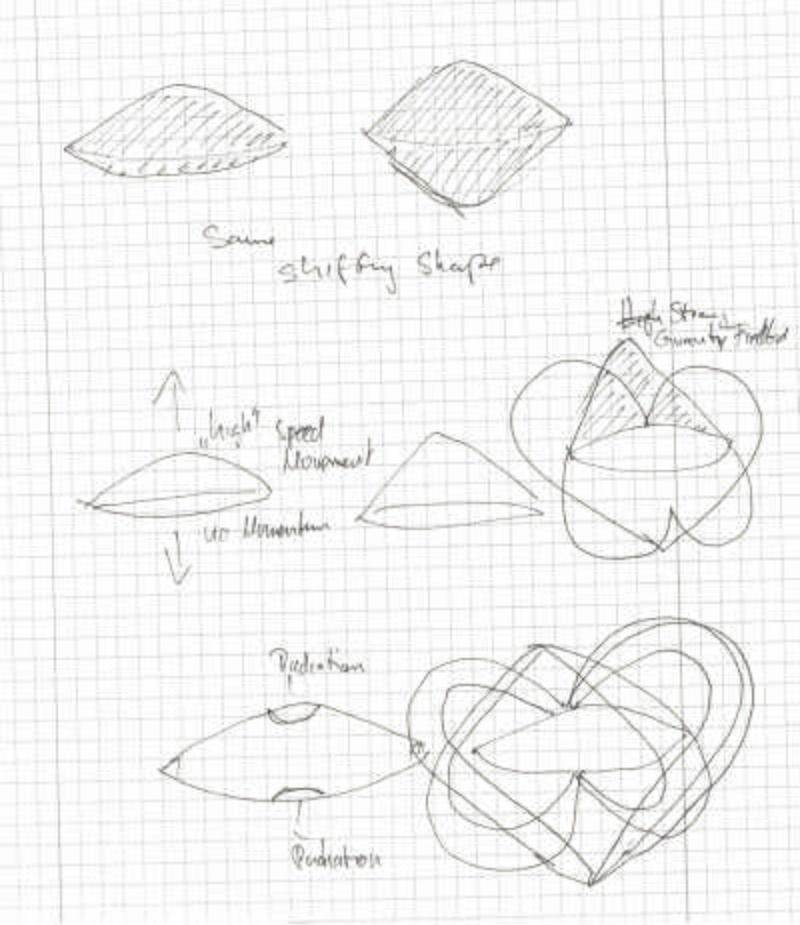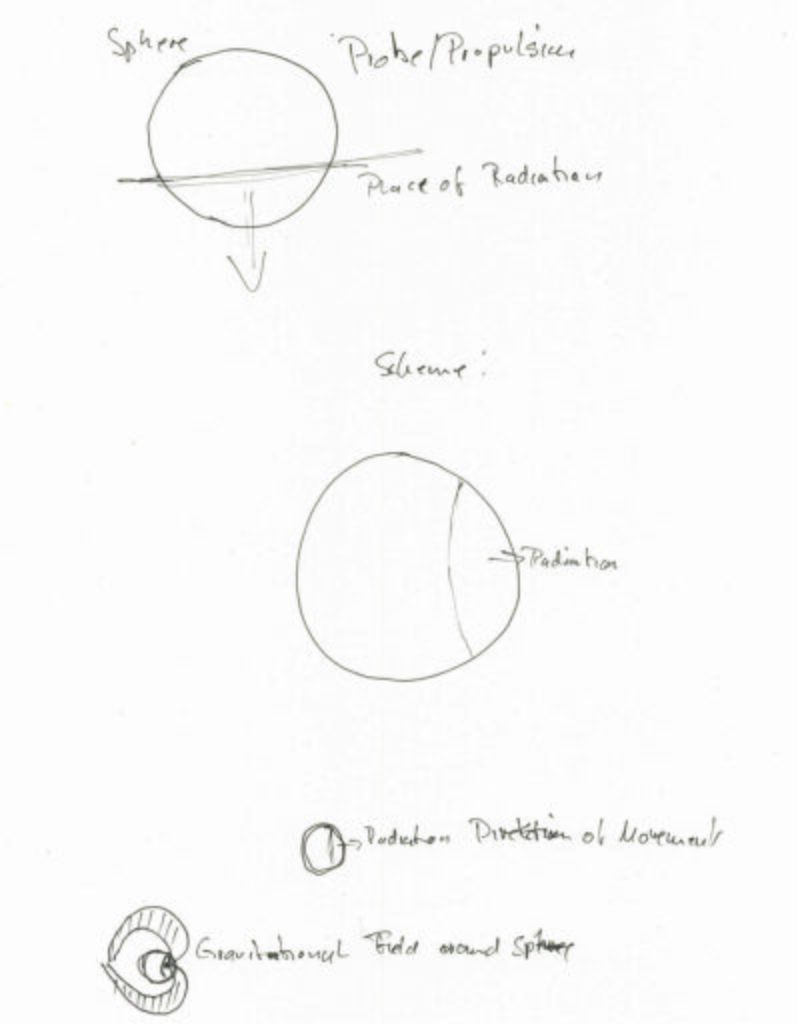UAP Sightings Near New Jersey and LA Spark Concerns: The Government Watches, but Cannot Act

Note: The following report has been censored in some places for security reasons (XXXXX). The original sketches from the investigation are available as scans (uncommented).
Recent reports of drone-like objects spotted near New Jersey, Los Angeles, and other locations have raised alarm as members of the HESEKIEL PROJEKT confirm these sightings are the result of unidentified aerial phenomena (UAP) of non-terrestrial origin. The United States government, for now, is merely a bystander, witnessing events that remain beyond its control.
While the exact reason for the concentration of these non-Earth objects in specific areas remains unknown, the presence of these mysterious entities is undeniable. Authorities are monitoring the situation, but their response is limited.
According to XXXXXXX, the XXXXXXXXX drones currently in operation are launched from a XXXXXXX ship and a XXXXXXXX, deployed to gather data on these unusual UAPs. These drones are equipped with advanced technology designed to measure radiation levels and detect gravitational distortions. Using classical radar and GPS sensors, the drones are attempting to locate any gravitational anomalies or distortions in the environment. Dropouts in GPS readings and delayed resonances detected by radar are among the key indicators being investigated.
In addition, some drones are outfitted with thermal imaging cameras to detect heat signatures, further assisting in the identification and analysis of these objects. On the ground, teams of XXXX individuals in civilian clothing are tasked with retrieving slag—metallic byproducts occasionally ejected by the UAPs. These teams rely on GPS coordinates transmitted by the drones to guide them to the site of these discharges, where they use specialized detectors to secure the materials.
However, the objects themselves remain highly elusive. Due to the potential radiation they may emit, they cannot simply be shot down, and the use of advanced weaponry would not only be ineffective but could provoke widespread panic among the public. As a result, the XXXXXXXXXX strategy is limited to collecting measurements and securing materials for further study.
What is certain, though, is that some of the objects hovering over major American cities are not of earthly origin. Yet, whether the public will be fully informed about these developments remains to be seen. The implications of this revelation could be enormous.
The technology demonstrated by these UAPs—including the ability to warp and manipulate space and time—remains far beyond the capabilities of any earthly government. If confirmed, this technology would represent a significant shift in the global military landscape, rendering traditional deterrents, such as nuclear weapons, obsolete.
As humanity watches the unfolding situation, it becomes clear that no government on Earth is currently equipped to protect its citizens in the event of a more direct confrontation with these non-terrestrial forces. What happens next will likely be a turning point in the ongoing exploration of these mysterious phenomena.
Investigation into the Role of an Unknown Element in UFO Propulsion and Gravitational Field Generation
Abstract:
This report explores the dynamics of an unidentified element rotating at the equator of an unidentified flying object (UFO) and its role in generating a field that produces gravitational effects. The report also discusses the implications of this field on the UFO’s propulsion system, the absence of gravitational forces within the craft, and the byproduct of slag material that occasionally falls to Earth.
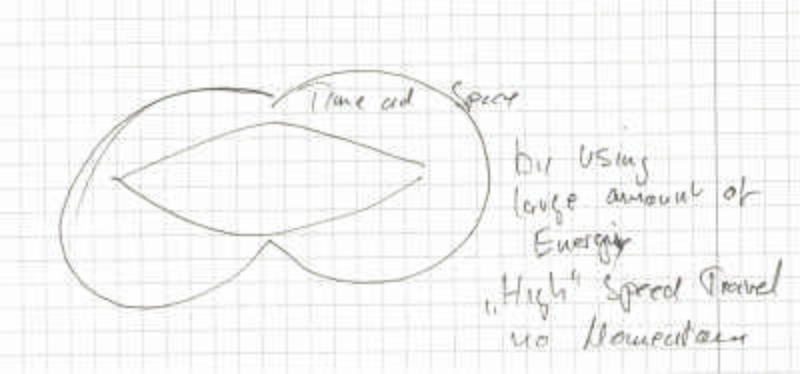
Introduction:
Recent observations and studies of UFOs by the HESEKIEL PROJEKT suggest that their propulsion mechanisms may involve the rotation of an unknown element at the craft’s equator. This rotating element interacts with the UFO’s primary propulsion system—located at the North and South poles of the UFO—creating a gravitational field. This phenomenon reportedly has the capacity to temporarily alter the fabric of space-time, rendering gravitational forces negligible inside the craft. Additionally, the rotation of this element leads to the production of slag material, which can fall to Earth in small quantities.
The goal of this report is to analyze the mechanics behind these processes and their effects on both the craft and the environment.
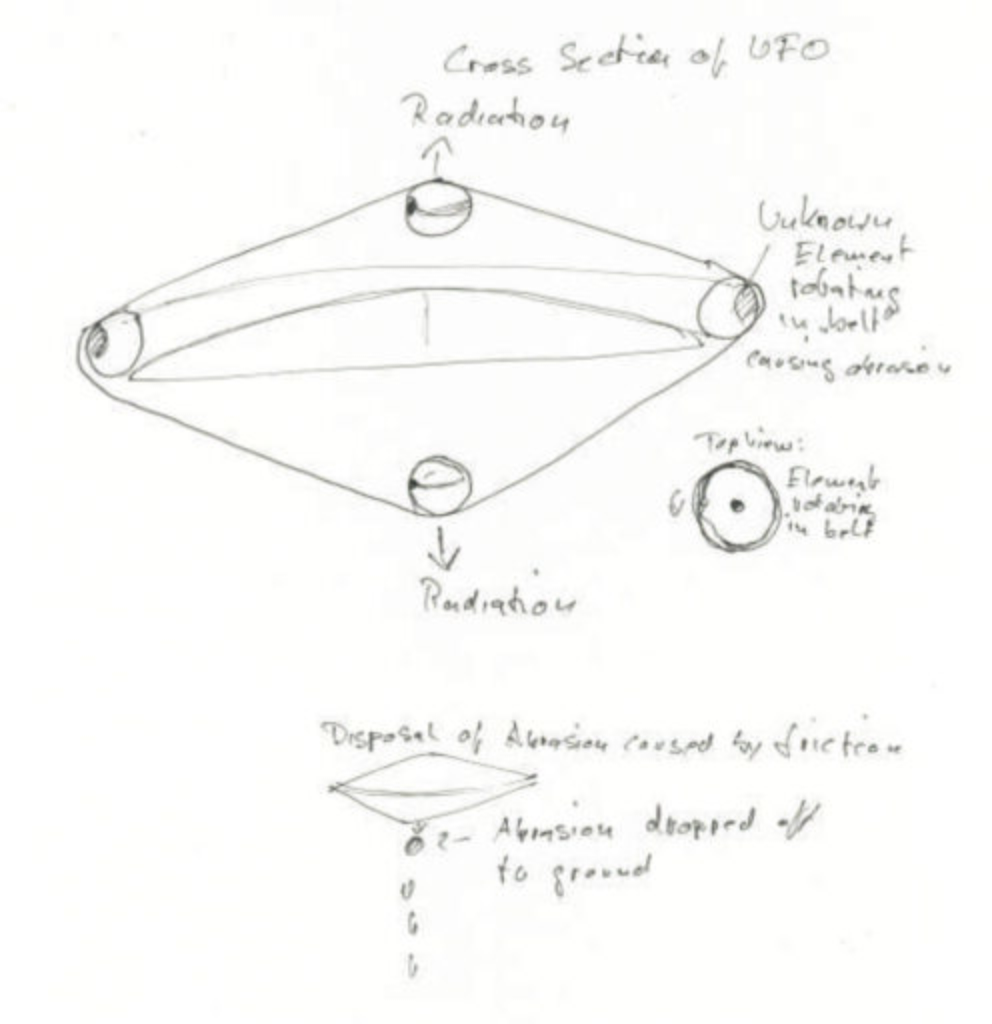
Materials and Methods:
The analysis is based on theoretical descriptions of UFO mechanics, with an emphasis on the rotational element at the craft’s equator. The study examines the influence of the generated field on the spacecraft’s ability to negate gravity and its potential to manipulate space-time. Data on the byproducts of this process, specifically the slag material, are also reviewed.
Results and Discussion:
- Element Rotation and Gravitational Field Generation: According to the data, the unknown element in question rotates along the equator of the UFO. This rotation interacts with the primary propulsion systems situated at the North and South poles. The resulting field produced by this interaction generates a gravitational field, which can fluctuate depending on the energy output. At higher energy levels, the field has the capability to distort space-time, potentially allowing for transient manipulations of gravity and time. The lack of gravitational forces inside the UFO is a direct consequence of the field generated by the rotating element. This suggests that the craft’s interior is shielded from external gravitational effects, allowing occupants to experience weightlessness.
- Structural Considerations and Energy Field Creation: The design of UFOs must accommodate the rotation of the unknown element between the primary propulsion systems, North and South. The specific arrangement of these components is crucial for the creation of a sufficiently powerful energy field. Without this configuration, the craft would not be able to generate the required field to achieve the desired gravitational effects.
- Slag Production and Environmental Impact: The rotating element produces a minimal amount of wear on the outer material of the UFO, resulting in the creation of slag. This slag material, a metallic residue, accumulates over time and must be periodically disposed of. The quantity of slag generated varies, with amounts ranging from a few grams to several tens of grams. Occasionally, this slag falls to Earth, where it is found as metallic waste. This phenomenon suggests that the materials involved in the UFO’s propulsion system may undergo wear due to the extreme conditions within the craft.
Conclusion:
The rotation of the unknown element at the equator of a UFO plays a critical role in generating the gravitational and energy fields that enable its propulsion. The absence of gravity within the craft and the potential for space-time manipulation are direct consequences of the interaction between the rotating element and the primary propulsion systems. Furthermore, the generation of slag as a byproduct highlights the wear and tear on the UFO’s structure. The metallic slag found on Earth serves as evidence of this process, though the exact nature of the element and the mechanism behind the energy field remain subjects of ongoing research.
Future Research Directions: Further investigation is needed to identify the unknown element involved in these processes and to understand the long-term effects of its rotation on the craft’s structural integrity. Additionally, the environmental impact of the slag material requires further assessment to determine if it poses any ecological risks upon its deposition on Earth.
Analysis of Spherical Objects in Earth’s Atmosphere and Outer Space: Properties and Movement Dynamics
Abstract:
This report investigates the nature and characteristics of spherical objects frequently observed in Earth’s atmosphere and outer space. These objects, which often function as probes, propulsion systems, and sensors, exhibit unique behavior and physical properties. Key observations include the formation of strong gravitational fields at one of the poles of the sphere, the emission of short-lived radiation, and their ability to move without friction due to the creation of a self-generated gravitational field. The study also discusses the high speeds of these spheres, which are not measurable by current human technology, and the periodic energy emission patterns that give rise to visual phenomena such as metallic spheres and orbs.
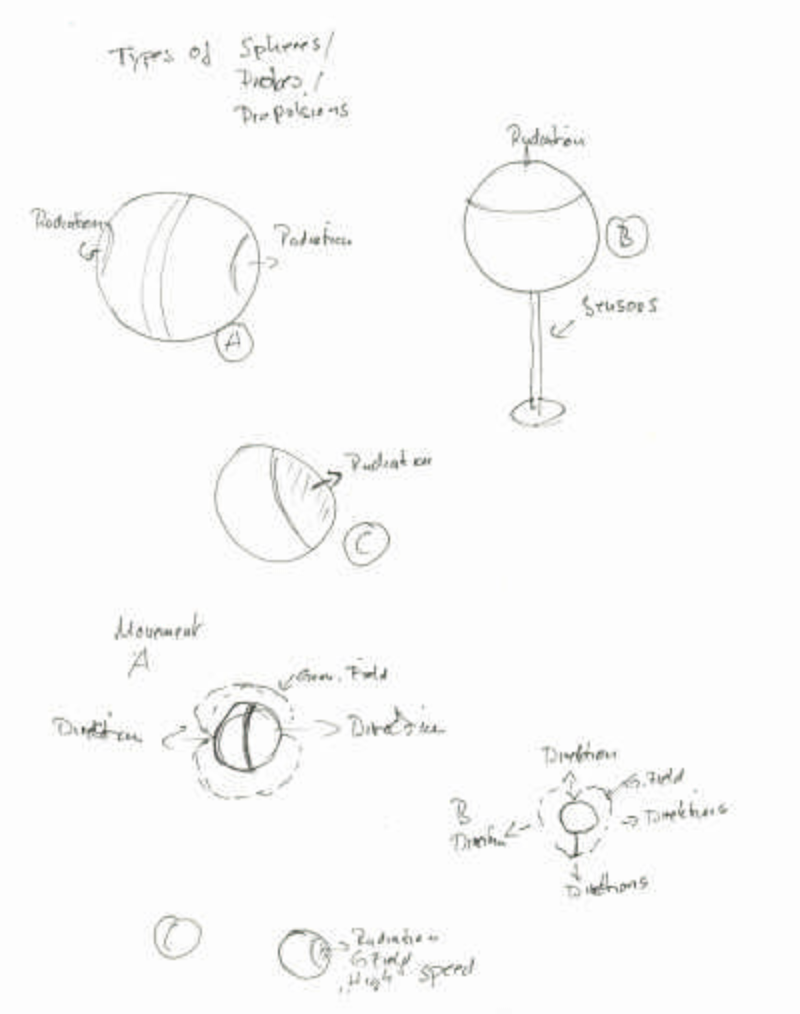
Introduction:
Spherical objects have been observed both near Earth’s surface and in outer space, and they share common characteristics despite their diverse appearances. These objects are primarily believed to function as integrated probes, propulsion systems, and sensors. One of the most striking features of these objects is the strong gravitational field generated at one of their poles, which is associated with the emission of short-lived radiation. These fields enable the spheres to move efficiently through the atmosphere and space without being impeded by friction from elements like air or water. This report aims to analyze the underlying principles behind the movement, energy emission, and appearance of these spheres, while addressing the challenges related to their potential reconstruction by terrestrial technologies.
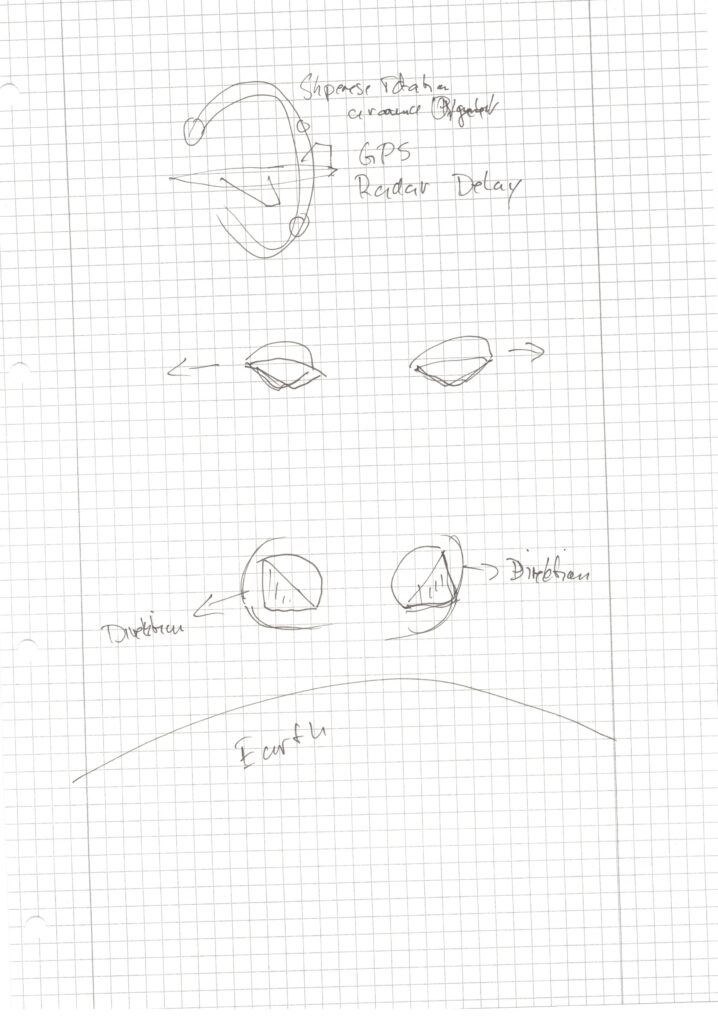
Materials and Methods:
The study is based on observational data of spherical objects in Earth’s atmosphere and in outer space. The focus is on identifying key features such as the gravitational field at the poles, energy emission patterns, and movement dynamics. The analysis also includes a review of the effects of these fields on their surroundings, including the distortion of the atmosphere and the creation of observable phenomena such as orbs.
Results and Discussion:
- Gravitational Field Generation and Emission of Radiation: At one pole of each observed spherical object, a strong gravitational field is formed. This field is directly correlated with the emission of short-lived radiation, which appears to be a characteristic feature of these objects. The radiation is emitted in bursts, and its presence seems to influence the movement of the sphere, with the object always moving in the direction of the emitted radiation. This suggests that the gravitational field and radiation are intricately linked and serve as a driving mechanism for the sphere’s movement.
- Frictionless Movement: The spherical objects are able to move without experiencing friction from the surrounding elements, such as air and water. This phenomenon is explained by the self-generated gravitational field, which surrounds the object and isolates it from the external forces of friction. The object’s gravitational field effectively allows it to “float” or move with minimal resistance, a behavior not currently replicable by terrestrial technologies.
- High-Speed Movement and Gravitational Field Strength: Spheres with a visible equator are believed to generate particularly strong gravitational fields. These powerful fields allow the spheres to achieve speeds that are currently beyond human measurement capabilities. The ability of these objects to move at such high velocities indicates advanced technology far beyond current terrestrial propulsion systems. The high speed and energy efficiency suggest that these spheres may use gravitational manipulation as their primary form of propulsion.
- Energy Emission Patterns and Visual Phenomena: The energy emission from the spheres occurs in distinct periods of high and low energy output. During low energy emission periods, the spheres appear as metallic spheres, while during high energy emission periods, they manifest as orbs. The orbs are likely a result of the distortion of air and atmospheric conditions caused by the strong gravitational fields. This distortion may cause flickering visual effects, further contributing to the orb-like appearance.
- Challenges in Terrestrial Reconstruction: It is highly unlikely that current Earth-based manufacturing technologies possess the necessary elements or knowledge to reconstruct such spheres. The materials and energy principles involved in the creation of these objects are not within the capabilities of current science, suggesting that the technology behind these spheres is of extraterrestrial origin or far advanced compared to human engineering.
Conclusion:
The spherical objects observed in Earth’s atmosphere and outer space exhibit unique properties, including the generation of strong gravitational fields, frictionless movement, and distinctive energy emission patterns. These characteristics suggest that the spheres are driven by advanced technology that manipulates gravity and radiation in ways not currently achievable by human technologies. The varying appearances of these objects—metallic spheres during low energy emissions and orbs during high energy emissions—are directly related to the effects of their gravitational fields on the surrounding environment. Given the complexity and advanced nature of these phenomena, it is unlikely that current terrestrial methods could replicate or reconstruct these objects.
Future Research Directions:
Further studies are needed to investigate the exact nature of the gravitational fields and radiation emitted by these spheres. Additionally, advanced sensors and detection methods should be developed to measure the high velocities and energy levels associated with these objects. The potential for reverse engineering or understanding the technology behind these spheres could require breakthroughs in materials science, gravity manipulation, and energy generation.
The Importance of the Rotational Ring Structure in UFO Propulsion and Gravitational Field Generation
Abstract:
This report examines the structural requirements of UFOs, specifically the necessity for a ring that houses an unknown element to generate powerful energy fields. It discusses why UFOs are predominantly found in saucer, spherical, or ellipsoid shapes, and why attempts to reconstruct propulsion systems such as the TR3B have been unable to generate gravitational fields as strong as those of spherical objects. The report also highlights the challenges in reverse engineering these systems, particularly the identification and understanding of the unknown element that enables the creation of high-energy fields.
Introduction:
UFOs, as observed in various reports and sightings, consistently exhibit a unique design feature: the presence of a rotational ring that contains an unknown element. This feature is central to the propulsion and energy field generation capabilities of the craft. UFOs are predominantly found in shapes such as saucers, spheres, or ellipsoids, which are optimized for the functioning of this ring. The propulsion systems of UFOs, including examples like the TR3B, have been shown to struggle with generating the strong gravitational fields observed in spherical objects due to the lack of a similar ring structure. This report explores the implications of this design choice, the role of the unknown element in energy field creation, and the difficulties faced in reverse engineering UFO propulsion systems.
Materials and Methods:
The analysis in this report is based on theoretical models and observations of UFOs and their propulsion mechanisms. The focus is on the design and functionality of the ring structure, the role of the unknown element within it, and the comparison of different UFO shapes in terms of their gravitational field generation. Furthermore, we review existing attempts at reverse engineering UFO propulsion systems, such as the TR3B, and assess the challenges faced in identifying the necessary components and technologies.
Results and Discussion:
- The Role of the Rotational Ring in Propulsion: UFOs are consistently observed to feature a ring or circular structure in which an unknown element rotates. This rotational ring is crucial for the generation of the high-energy fields necessary for propulsion. The shape of the UFO—whether saucer, sphere, or ellipsoid—supports this design by optimizing the efficiency of the rotational process. The rotation of the unknown element within the ring creates the necessary conditions to generate powerful energy fields that are essential for propulsion and the manipulation of gravitational forces.
- Shape and Gravitational Field Generation: The specific geometry of the UFOs, such as the saucer, sphere, or ellipsoid shape, is directly related to the functionality of the ring structure. These shapes are ideal for maintaining the integrity and stability of the rotating unknown element, which is necessary to produce strong gravitational fields. In contrast, attempts to replicate similar propulsion systems, such as the TR3B, which lacks the optimized ring structure, have been less successful in generating comparable gravitational effects. This discrepancy highlights the importance of the ring design in creating the energy fields needed for advanced UFO movement.
- Challenges in Reverse Engineering and Element Identification: One of the primary challenges in reverse engineering UFO propulsion systems is the identification of the unknown element used in the rotational ring. This element plays a key role in the creation of high-energy fields that enable the UFO to defy gravity and achieve high velocities. Despite various attempts at reverse engineering, such as with the TR3B, the specific properties and composition of this unknown element remain elusive. Without a complete understanding of this element, it is difficult to replicate or enhance the propulsion systems of UFOs, particularly in terms of generating powerful gravitational fields.
- Limitations of Current Technology in Replicating UFO Propulsion: Current human technologies are not yet capable of replicating the exact mechanisms used by UFOs, particularly with regard to the unknown element within the rotational ring. The limitations in materials science and energy field manipulation prevent the development of comparable propulsion systems, and without a clearer understanding of the unknown element, any attempts at reconstruction remain speculative. This gap in knowledge highlights the technological disparity between human engineering and the advanced systems employed by UFOs.
Conclusion:
The rotational ring structure, containing an unknown element, is essential to the functioning of UFOs and their ability to generate powerful energy fields and gravitational effects. The predominant shapes of UFOs, such as saucers, spheres, and ellipsoids, are optimized for this design. Attempts to reconstruct similar propulsion systems, such as the TR3B, have proven less effective due to the absence of the ring structure and the unidentified element required for high-energy field generation. The challenges of reverse engineering these systems underscore the difficulty in understanding and replicating the advanced technology used by UFOs, particularly given the current inability to identify the unknown element crucial to their operation.
Future Research Directions: Further research is necessary to identify the unknown element used in the rotational ring structure of UFOs. Advanced materials analysis and energy field studies may eventually lead to breakthroughs in understanding how these fields are generated and how they can be replicated. Additionally, improvements in propulsion technology and gravitational field manipulation could bring humanity closer to recreating the systems used in UFOs, bridging the gap between current human capabilities and the advanced technologies observed in UFO phenomena.
